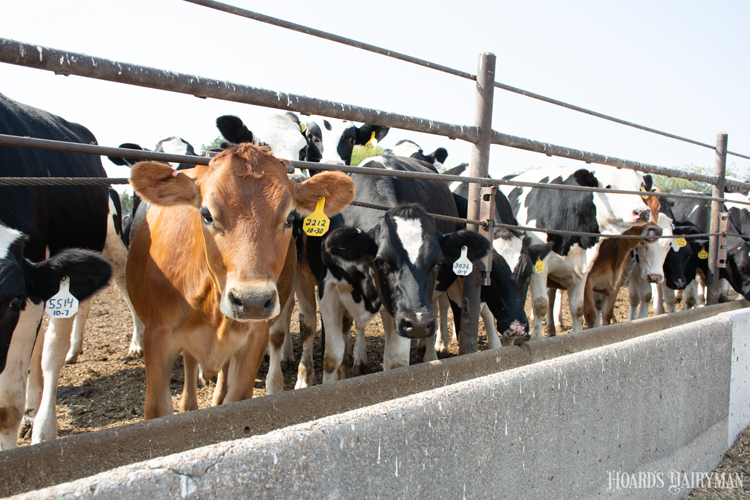
After the U.S. dairy industry experienced years of declining fertility in our cows, the trend finally turned around by the early 2000s. Synchronization, genetic selection, and genomic information have made getting cows pregnant in a timely fashion easier; pregnancy rates over 30% are no longer aspirational but regularly achieved.
The main reproduction challenge on our farms now, believes the University of Wisconsin-Madison’s Paul Fricke, lies in the heifer herd.
During a Reproduction Roadshow presentation, Fricke described that a UW-Madison survey indicated it costs a farm roughly $2,355 to raise a heifer calf up to calving. Reducing that number largely depends on attention to reproduction. Heifers cannot be managed with an “out of sight, out of mind” mindset, said the professor and extension specialist.
Start breeding heifers when they reach 55% of your herd’s mature body weight, he advised. This will help them meet the goal of being 85% of the herd’s mature body weight postcalving.
Fricke described a 7,000-cow dairy where his team looked at heifer breeding and calving data. They split animals up into four quartiles depending on body weight before calving and found a 25-percentage point difference in pregnancy per A.I. between the lightest and heaviest heifers — with the lighter heifers getting pregnant faster. Those smaller heifers also had higher Predicted Transmitting Abilities (PTAs) for daughter pregnancy rate and heifer conception rate.
“Less fertile heifers get big,” Fricke said, noting that it’s not the other way around as it may be easy to think. Every missed opportunity to get pregnant results in another 21-day estrous cycle when that heifer is simply eating and growing.
In this farm’s case, he also recognized that the smaller heifers that calved earlier had some of the lowest PTAs for milk, though they were, of course, producing milk earlier. On the other hand, once the bigger heifers calved, they gave more milk; this was likely a combination of genetics and their size, Fricke said.
To help heifers settle, he described the popular five-day CIDR synchronization protocol and the slightly modified six-day protocol as good options with both conventional and sexed semen. A study they worked on found that the five-day protocol can save about $16 with sexed semen compared to the six-day because of slightly higher pregnancy per A.I. “The one thing you don’t want to do with sexed semen is breed too early,” he noted. “With conventional semen, it is almost impossible to breed too early.”
Ultimately, successful heifer reproduction is what allows a herd to keep moving forward as it brings in new genetics to the milking string and replaces cows that leave the herd. Making the most out of every heifer on your farm is even more crucial in today’s tight inventory market. “Now that we’re raising fewer heifers, it’s more important to be better with them,” Fricke summarized.








